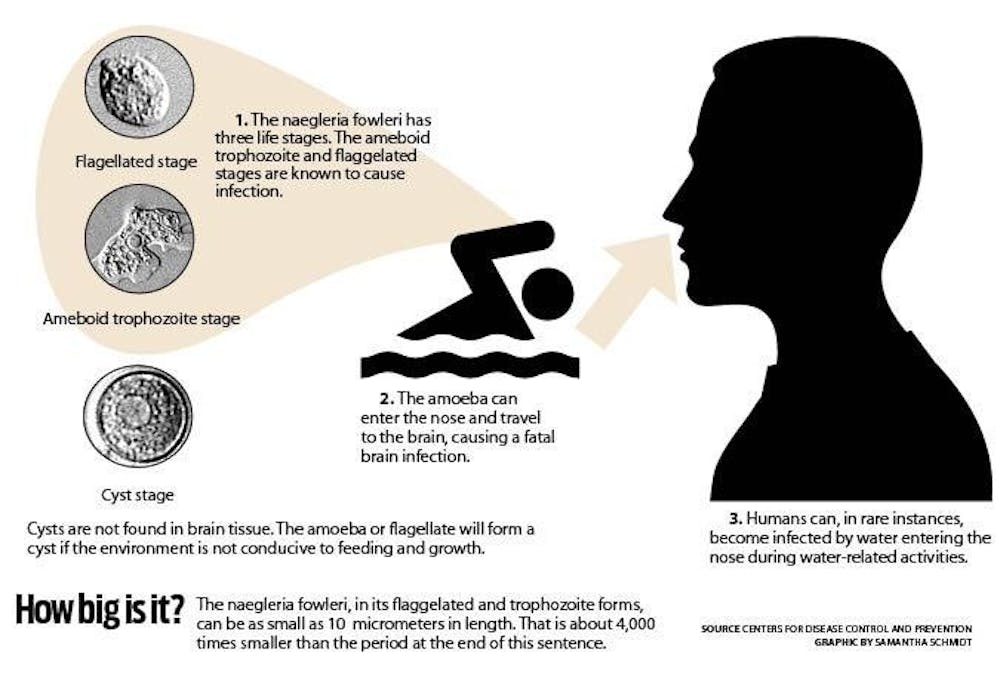The death of a Loogootee, Ind., man Aug. 7 was caused by a brain-eating amoeba found in bodies of freshwater sources, the Indiana State Department of Health
confirmed.
The free-living microscopic amoeba, known as naegleria fowleri, can cause a rare but severe infection of the brain called primary amebic meningoencephalitis, according to the Centers for Disease Control and Prevention.
The man died three weeks after swimming in West Boggs Lake near Loogootee, Ind., the Associated Press reported. The lake’s beach was ordered closed Sept. 7.
Only one person out of 123 known cases survived after contracting the disease since 1962, according to the CDC. In the United States, only 32 people have caught the disease in the last 10 years. Out of these cases, 28 of those infected were contaminated while in infected recreational water sources.
If infected, a person will begin to express symptoms within a week, said Jennifer House, veterinarian and director of zoonotic and environmental epidemiology at the Indiana State Department of Health.
“Though the disease is still rare, we know that people will start having severe headaches and aches and pains throughout their body,” House said. “The process is very rapid. People then will go into seizures, a coma and die. It happens very quickly.”
The amoeba are drawn to warm bodies of freshwater, such as lakes, rivers and creeks, according to the CDC. Chlorinated swimming pools, contaminated tap water and water heaters are also threats for housing the organisms. They flourish during the summer months when water sources reach up to 115 degrees Fahrenheit.
To reduce the risk of contracting this disease, according to the CDC, limit swimming in fresh bodies of water. When in water, do not let water go up the nose and limit the amount of time the head is submerged beneath the water. Also, avoid stirring up the soil and sediment on the bottom and around the water when swimming.
People prone to sinus infections and allergies are at greater risk.
Because of the area’s hotter summer, the water levels in lakes and ponds are lower than normal, House said. As a result, it is possible there are higher concentrations of the amoeba in the soil.
“Even with winter coming, the amoeba will not die off,” she said. “They will burrow into the sediment. Then in the summer, when the sediment is stirred up once again, they will re-emerge.”
Candice Hoffmann, a member of the National Center for Emerging and Zoonotic Infectious Disease of the CDC, said it is unknown why the amoeba only infects the brain.
“The amoeba are feeding on bacteria in the environment and are accidentally introduced to the brain and began to infect tissue there,” Hoffman said.
Dennis Williamson, environmental specialist at the Monroe County Health Department, said he is not sure why the amoeba targets humans, although he said there have been reports of cows becoming infected. There have not been any confirmed cases of fish becoming infected, he said.
“They are sucked up with water through the nose,” he said, “We just know that they are affecting the brains of humans, but fish and animals could be affected. Right now, anything is possible.”
Amoeba in Indiana lake kills man

Get stories like this in your inbox
Subscribe





